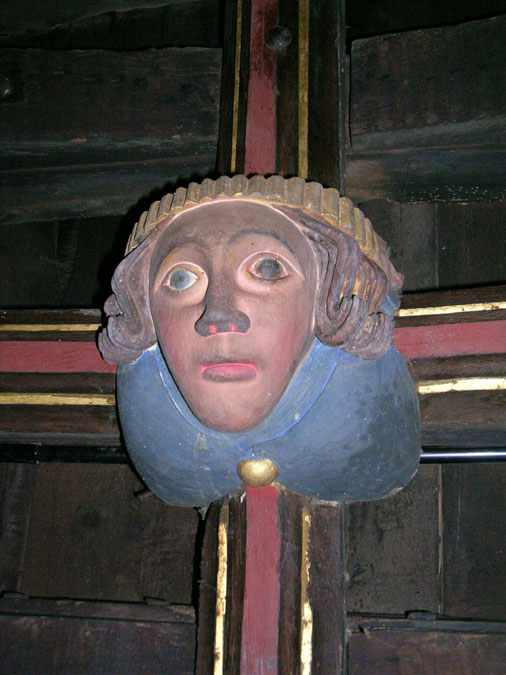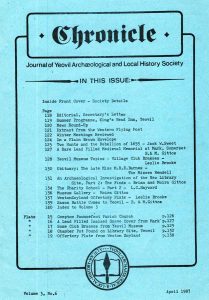This article came from the Chronicle published April 1987. Page: 134-136.
The Yeovil Charity School – (Part 3 of 3)
Other Parts: Part 1 of 3 and Part 2 of 3
Author: L.C.Hayward
Some twenty years ago a former pupil of Yeovil Grammar School in Hendford (now Flower’s House) vividly remembered “Daddy Monk” who retired in 1907. He was still using the Chantry in Church Path, although the Charity School had closed in 1884. Writing in 1920, his great niece Dorothy Wilkins remembered his regular visits to his relations in Harrow Weald; “A venerable figure and a delightful old gentleman, who always gave her a golden half sovereign as a parting gift”.
Henry Monk had been appointed headmaster of the Charity School in 1858 at a salary of £93 a year, with permission to take private pupils on condition that he employed a trained master to teach the charity boys under his supervision. Monk, a young man of 26, was qualified in German as well as the Classics. He came from Carshalton Ordnance School where he also showed prowess in cricket. He soon complained about his inadequate salary and difficulties arose from the growing competition of Huish National School and from disputes with the Nowes Foundation in Romsey, one of the School’s endowments. In 1864, the Report of Endowed Schools Commission provides a detailed description of the school. In one of the two schoolrooms of “the Chantry”, thirty-four boys, sons of mechanics and labourers, were given a free elementary education. There were two classes, made possible by the use of a “monitor” or pupil teacher. School began at 9 with prayers and religious instruction, three mornings and three afternoon periods were spent on reading, dictation, writing (including “copy books”), arithmetic and spelling; the older boys had history, geography and singing. Lessons ended at 4.30 with prayers,. Half days were worked on Wednesdays and Saturdays. The ten boys on the Nowes Foundation had instruction in the Church Catechism; all boys were expected to attend Church and Sunday School in their own parishes. The Nowes scholars received two suits of clothing a year and £5 apprenticeship premiums on leaving at twelve or thirteen.
The day and boarding grammar school pupils met in the second room of the Chantry and followed a course adapted to individual needs. All boys had religious instruction and lessons in “the English subjects”, mathematics was taught by an assistant, French by a visiting teacher, and book-keeping or mensuration or Latin if required. Three boys were learning Greek. There was a library but no science teaching or physical training. Music and singing also appear on the timetable. In 1872 the Western Gazette reported a successful entertainment by Mr.Monk and his Grammar School pupils with music and drama in the programme. Twenty boarders (there were but nine day boys) occupied a house in Hendford. They seem to have been well treated, with four meals a day (twice with meat), and separate beds. There was a playground, a gymnasium and even a sports ground for football and cricket. Monk was a good all-round cricketer himself, and provided a sound schooling at an annual cost of about £30, including board.
Nevertheless, the school was not entirely satisfactory to the Endowed Schools Commissioners, who rightly pointed out that the headmaster was combining a private grammar school for middle-class boys with a primary school. The latter was not inspected by the Government, and was too small to be run cheaply and efficiently (its cost per boy per year, £3, was double that of Huish National School). The Commissioners favoured the closing of the Charity School, and the expansion of the private part into a public grammar school, with new buildings, adequate staff, and free places for boys from the elementary schools provided from the ancient endowments. They even envisaged a a similar girls’ school. Clothing and premiums for apprenticeship were considered outmoded and were to be abandoned.
Town Council pronounced in favour of this scheme, but protests reached the Trustees from Preston, Alvington and Brympton against the loss of the Nowes’ benefits in clothing and premiums, to which they were entitled under the terms of Nowes’ will.
The Charity Commissioners, who were now administering educational trusts, had doubts concerning the financing of the proposed new school, and finally decided (in 1877) that as there had been no Latin scholars for many years at the Charity School, they had no powers under the Endowed Schools Act to promote this scheme at all. This was virtually the end of the matter, despite repeated protests from the Town Council.
When the Nowes Foundation at Romsey suspended payments in 1879 under a scheme: for re-organising the charity (which had been grossly mismanaged), Mr.Monk lost £38 per year of his salary for Charity School work, and not unnaturally the numbers at “the Chantry” dwindled. He continued to use the building for his private school, and eventually relinquished the Charity School headmastership with £250 compensation. He had received nothing from the Trustees since 1881, and the income was to accumulate pending the adoption of a new scheme. Monk rented the Chantry until 1889, when for the next six years it was used for Roman Catholic services. Yeovil School Board took over the Chantry in 1896 for two years, and finally Mr.Monk returned to it until his retirement in 1907. Since then it has been used for various purposes by the Yeovil and Somerset Education Committees. The income from the ancient endowments was used to provide free places at Yeovil (Grammar) School and the Girls’ High School. Since 1945 when secondary education became free, the Free School Trustees have made grants for higher education not otherwise available. The Chantry is now used as a store-room for legal documents. Recent repairs to the building revealed in the rafters copy books and a Latin exercise book dated 1869. They are now in Yeovil Museum. The Old Boys Association of Yeovil School had a plaque placed on the wall of the Chantry to commemorate its long use since 1573 as a school for Yeovil Children.

